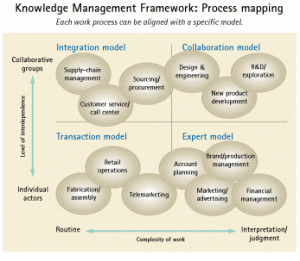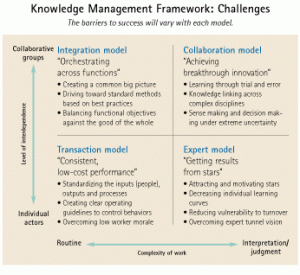HOKUM KONTRAK INTERNASIONAL.
By admin | Published May 25, 2011 Pengertian kontrak:
Kontrak atau persetujuan sama dengan pengertian perjanjian
Menurut SUBEKTI perjanjian adaahsuatu peristiwa dimana ada seseorang yang berjanji kepada seorang lainatau dua orang itu saling berjanji untuk melaksanakan suatu hal.
Hubungan kedua orang yang bersangkutan mengakibatkan timbulnya suatu ikatan yang berupa hak dan keweajiban kedua belah pihak atas suatu prestasi.
Menurut Yahta M Harahap perjanjian adalah suatu hubungan hokum kekayaan antara dua orang atau lebih, yang memberikan kekuatan hak pada suatu pihak untuk memperoleh prestasi dan sekaligus mewajibkan kepada pihak lain untuk melaksanakan prestasi.
Objek Kontrak
Pokok sebuah persetujuan atau perjanjian adalah prestasi.
Prestasi bias berupa:
1. Memberikan sesuatu
2. Berbuat sesuatu
3. Tidak berbuat sesuatu
Persyaratan objek suatu kontrak:
1. Objeknya hrus tertentu tau dapat ditentukan
2. Dibolehkan menurut peraturan perundang-undangan yang berlaku
3. Tidak bertentangan dengan kepentingan umum dan tata susila
4. Prestasi harus benar-benar rill agar benar-benar dapat dilaksanakan
Subjek hokum kontrak:
1. Orang (Natuurlijk person) yang sudah dewasa
2. Badan hokum (recht persoon) yang memenuhi syarat formal suatu badan hokum
Dala suatu perjanjian yang dapat menjadi subjek hokum adalah individu dengan individu atau pribadi dengan pribadi, badan hokum dengan badan hokum
Prinsip dan Klausul dalam hokum Kontrak:
1. Asas kebebasan berkontrak
2. Asas konsensualitas
3. Asas kebiasaan
4. Ass peralihan resiko
5. Asas ganti kerugian
6. Asas kepatutan (equity Principle)
7. Asas ketepatan waktu
8. Asas keadaan darurat (force Majeure)
9. Klausul pilihan hokum
10. Klausul penyelesaian perselisihan
Ad.1 para pihak berhak menentukan apa saja yang ingin mereka sepakati sekaligus apa yang tidak ingin dicantumkan dalam naskah perjanjian, tetapi bukan berarti tanpa batas.
Asas kebebasan berkontrak diatur dalam pasal 1338 yang dirumuskan sebagai berikut:
1. Semua persetujuan yang sah berlaku sebagai undang-undang bagi mereka yang membuatnya.
2. Persetujuan itu tidak dapat ditarik kembal selain dengan sepakat kudua belah pihak, atau karena alas an-alasan yang oleh undang-undang dinyatakan cukup untuk itu
Ad.2 perjanjian timbul karna adanya consensus atau persesuaian kehendak para pihak.. jadi sebelum tercapainya kata sepakat, perjanjian tidak mengikat.
Konsensus tidak boleh ditaati jika:
1. Adanya paksaan
2. Adanya penipuan
3. Adanya kekeliruan akan objek kontrak
Ad.3 suatu perjanjian tidak mengikat hanya untuk hal-hal yang diatur secara tegas dalam peraturan perundang-undangan, yurisprudensi, dsb tetapi juga hal-hal yang menjadi kebiasaan yang diikuti masyarakat umum.
Jadi sesuatu yang menurut sifat persetujuan diharuskan oleh kepatutan, dengan kata lain hal-hal yang menurut kebiasaan selamanya diperjanjikan dianggap secar diam-diam dimasukan dalam persetujuan meskipun tidak dengan tegas dinyatakan.
Ad.4. selama tidak bertentangan dengan undang-undang, kesusilaan dan ketertiban umum
Ad.5 pasal 1365 BW: setiap perbuatan melanggar hokum yang membawa kerugian kepada seorang lain mewajibkan orang yang karena salahnya menimbulkan kerugian tersebut.
Untuk setia perbuatan yang melawan hokum karena kesalahannya mengakibatkan orang lain dirugikan, maka ia harus mengganti kerugian yang diderita orang lain tetapi harus dibuktikan adanya hubungan sebab akibat antara perbuatan melawan hokum dengan kerugian dimaksud sebab tidak aka nada kerugian jika tidak terdapat hubungan antara perbuatan melawan hokum yang dilakukan oleh pelaku dengan timbulnya kerugian tersebut.
Ad.7 prinsip ini penting untuk menetapkan batas waktu berakhirnya suatu kontrak. Jika prestasi tidak dilaksanakan sesuai dengan batas waktu yang telah disepakati, salah satu pihak telah wanprestasi atau telah melakukan cidra janji yang menjadikan pihak lainnya berhak untuk menuntut pemenuhan prestasi tersebut.
Ad.8 penting untuk menentukan siapa yang akan bertanggung jawab bila suatu saat ada hal-hal yang diluar kemampuan manusia.
Ad.9 pilihan hokum hanya berlaku pada bidang hokum perjanjian (kontrak). pilihan hokum dapat:
1. Secara tegas. Maksudnya dengan mencantumkannya dalam kata-kata, kalimat yang dicantumkan dalam kontrak tersebut.
2. Secara diam-diam. Maksudnya pilihan hokum seperti ini dapat disimpulkan dari ketentuan-ketentuan dan fakta-fakta yang ada pada perjanjian itu sendiri.
Choice of law berlaku pembatasan berikut
1. Tidak mengganggu ketertiban umum
2. Bila pemerintah telah mengadakan peraturan khusus yang bersifat imperative tentang objek kontrak apa yang diperjanjikan tersebut.
3. Dalam hal kontrak kerja tidak diperbolehkan melakukan pilihan hokum.
4. Para pihak bias memilih hokum Negara ke-3 salkan yang dipilih bukan merupakan hokum yang sama sekali tidak ada hubungannya dengan kontrak yang bersangkutan.
Jika tidak ada pilihan hokum maka untuk mengetahui hokum mana yang dapat dipergunakan bagi kontrak yang bersangkutan yaitu:
1. Lex Loci Contractus atau Lex Loci Solution
Hokum dari tempat dilaksanakannya kontrak tersebut.
Bagaimana bila para pihak tak bertemu secara lanngsung???
a. Teory Pengiriman
Dalam perjanjian perdata yang para pihak tidak bertemu muka dalam mencapai persetujuan bersama yang terpenting adalah sat suatu pihak mengirimkan surat atau pesan lewat pesawat telepon yang berisi penerimaan atas tawaran yang diajukan oleh pihak pengirim, jadi hokum yang erlaku bagi perjanjian tersebut adalah hokum dari Negara si penerima tawaran yang mengirimkannya lewat penerimaanynya.
Contoh:
A(Indonesia) menawarkan suatu bentuk persetujuan ke B(Singapura), lalu B menerima tawaran itu dan mengirimkan surat atau pernyataan penerimaan btawaran lewat telepon. Maka disini berlaku hokum B (Singapura).
Teory ini berlaku untuk Negara-negara Common law.
b. Teory Pernyataan
Penerimaan terhadap penawaran harus dinyatakan (declared).
Surat Pernyaaan Menerima Tawaran harus telah sampai kepada pihak yang menawarkan, dan penerimaan penawaran tersebut harus diketahui oleh pihak yang menawarkan.
Contoh yang serupa dengan diatas maka perjanjian tersebut berlaku hokum Indonesia.
Teory ini berlaku untuk Negara-negara civil law.
2. The Proper Law Of a Contrack (Dicey & Moris)
Dalam menentukan hokum yang berlaku untuk sebuah perjanjian, dapat dilihat dari seluruh bentuk, isi, dan fakta-fakta yang ada disekitar perjanjian tersebut. Dari hal ini kan dapat ditemukan hokum yang berlaku, yaitu hokum dar Negara yng meiliki titik taut/hubungan yang paling erat dan nyata dengan perjanjian itu.
3. The Most Characteristic Connection (Rabel)
Dengan melihat titik taut yang paling mempunyai karakteristik atau paling fungsional dalam perjanjian tersebut. Melihat bagaimana fungsi dari perjnjian yang bersangkutan dan dengan sistem hokum manakah perjanjian tersebut secara fungsional empunyai hubungan. Jadi harus diperhatikan factor sosiologis dari perjanjian tersebut.
Contoh:
1. Perjanjian jual beli berrlaku hokum si penjual.
2. Perjanjian mengenai benda tetap berlaku hokum dari Negara dimana benda tersebut terletak.
3. Perjanjian kontrak kerja berlaku hokum dar tempat dilaksaknnya perjanjian tersebut.
Ad. 10 setiap oersetujuan/kontrak tertulis harus memuat suatu klausul penyelesaian perselisihan diantara para pihak. Hal ini penting untuk menentukan forum panel wasit (rbitrase) atau lembaga peradilan yang memiliki yurisdiksi untuk menyelesaikan perselisihan apabila perselisihan mereka tidak dapat diselesaikan sendiri oleh kedua belah pihak
Syarat Syahnya Kontrak
Pasal 1320 KUH-Perdata ada 4 yaitu:
1. Sepakat mereka yang mengikatkan dirinya
Kontrak dapat dibatarkan bila ada unsure-unsur seperti:
a. 1324 KUH-Pdt Paksaan
b. 1328 KUH-Pdt Penipuan
c. 1322 KUH-Pdt Kekeliruan
2. Kecakapan untuk membuat suatu perikatan
3. Mengenai ssuatu hal tertentu (Objek Kontrak)
Objeknya harus jelas dan tegas secara rinci untuk menghindari ketidak pastian atau kekeliruan.
4. Suatu seba yang halal.
Syarat 1 & 2 adalah syarat sunjektif, jika tidak tepenuhi maka kontrak tersebut dapat dimintakan pembatalan.
Syarat 3 & 4 adalah syarat objektif, jika tidak terpenuhi kontrak tersebut batal demi hokum.
PANDUAN DAN TEKNIK
PENYUSUNAN KONTRAK BISNIS YANG IDEAL
Hokum dan masyarakat itu bersifat interdepensi (saling bergantung).
Kedudukan hokum itu sentral, strategis, lintas sektoral.
Fungsi hokum adalah pengayoman (dengan cita hokum sebagi jiwanya berfungsi konstitutif dan regulative) dengan tujuan:
1. Perdamaian/stabilitas dinamis
2. Keadilan (keseimbangan hak dan kewajiban)
3. Kesejahteraan
4. Kebahagiaan
Hokum merupakan prasarana non fisik pembangunan nasional
KONTRAK DAN HUKUM KONTRAK
Esensi kontrak adalah janji atau sekumpulan janji yang dapat dipaksakan pelaksanaannya, atau dapat dikatakan sebagai persetujuan yang dapat dipaksakan berlakunya menurut hokum.
Persetujuan adalah pertukaran atau konsiderasi (pertimbangan) janji antar pihak.
Untuk menyelenggarakan kontrak diperlukan persyaratan tertentu. Yaitu:
1. Persetujuan (manifestasi keinginan bersama atau mutual assent)
2. Janji yang didukung pertimbangan tertentu (konsideran)
3. Kapasitan untuk berkontrak
4. Tidak melanggar hokum
Hokum kontrak internasional adalah sekumpulan ketntuan yang mengatur pembentukan (formation), aktifitas di bidang ekonomi/ industry (performance), dan pelaksanaan (implementation kontrak antara para pihak, baik yang bersifat nasional maupun internasional.
Tujuannya: melindungi harapan individu (yang sesuai dan dapat dibenarkan oleh hokum), bisnis, dan pemerintah.
BENTUK KONTRAK
1. Standard Contract (perjanjian baku)
Perjanjian yang klausulnya di bakukan dan dibuat dalam formulir.
Tujuan:
a. Untuk kelancaran proses perjanjian (efisiensi, ekonomis dan praktis)
b. Untuk keuntungan satu pihak.
c. Untuk melindungi kemungkinan kerugian akibat perbuatan debitur (yang diberi kredit).
d. Menjamin kepastian hukum
2. Kontrak Bebas
Pasal 1338 KUH-Pdt tapi harus tetap memperhatikan asas keptutan, kebiasaan, dan ketentuan perundang-undangan yang berlaku. Pasal 1338 ayat (3) dan Pasal 1339 KUH-Pdt
3. Kontrak tertulis dan tudak tertulis
Kontrak tertulis dapat dijadikan alat bukti, juga untuk menghindari adanya ketidak pastian akkan kesepakan yang telah mengikat para pihak. Contoh akta (otentik maupun dibawah tangan)
JENIS KONTRAK
1. Perjanjian timbal balik (contoh Jual beli)
2. Perjanjian Cuma-Cuma (contoh: hibah)
3. Perjanjian atas beban (prestasi sebelah pihak)
4. Perjanjian bernama (diberi nama oleh peraturan perundangan perdata & dagang)
5. Perjanjian tidak bernama
6. Perjanjian campuran (contractus sui generis)
7. Perjanjian Konsensualitas.
Contoh Perjanjian Bernama yang diatur KUHPdt & KUHD:
1. Perjanjian Jualbeli
2. ————–Tukar menukar
3. ————–Sewa menyewa
4. ————–untuk melakukan pekerjaan, pemborongan dll
5. ————–Persekutuan
6. ————–Hibah
7. ————–Penitipan barang
8. ————–Pinjam pakai
9. ————–Pinjam-meminjam
10. ————–Bungan tetap
11. ————–Untung-untungan
12. ————–Penanggungan
13. ————–Perdamaian
14. ————–Asuransi
15. ————–Pengangkutan
16. Pemberian kuasa
Contoh Perjanjian Bernama diluar KUHPdt & KUHD:
1. Perjanjian Keagenan
Penyaluran barang pada konsumen dengan system komisi yang diberiakan oleh produsen/principle.
2. Perjanjian Distributor
Pembelian barang dari produsen untuk dijual pada konsumen untuk keuntungan dan tanggung jawab sendiri.
3. Perjanjian Pembiayaan
Badan usaha yang bergerak dalam penyediaan dana dan barang modal tetapi tidak menarik dana secara langsung dari konsumen.
4. Perjanjian Kredit
Contoh bentuk Kontrak Internasional:
1. Joint venture
2. Joint enterprise
3. License agreement
4. Kontrak karya
5. Franchising agreement
6. Technical assistance agreement
7. dll
PROSEDUR DAN TAHAPAN PENYUSUNAN KONTRAK
1. Prapenyusunan Kontrak
a. Identifikasi para pihak
Untuk mengetahui apakah para pihak yang benar-benar mempunyai full power sebagai refresentatif dari perusahaan yang bonafide atau tidak
b. Penelitian permulaan
Diteliti beberapa aspek yang berkaitan dengan kondisi politik dalam negeri para pihak, system hokum, dampak social, dan aspek ekonomi.
c. Pembuatan MOU (Memorandum of understanding)
d. Perudingan (negosiasi)
2. Penyusunan Kontrak
a. Pertemuan para pihak yang akan saling mengikatkan diri
b. Perundingan atau negosiasi pendahuluan
c. Pembuatan MOU (dalam praktik dapat dilampaui)
d. Perumusan naskah kontrak (draft articles)
e. Perundingan atau negosiasi lajutan
f. Pembahasan naskah akhir kontrak (informal drafting text)
g. Penandatangan naskah kontrak (formal drafting text)
3. Pasca Penyusunan Kontrak
a. Melaksakan isi kontrak
b. Menafsirkan kontrak (bila terdapat kalimat yang membingungkan sehingga menimbulkan hambatan untuk mewujudkan maksud dan tujuan para pihak)
c. Menyelesaikan sengketa.
a). litigasi (melalui pengadilan)
b). nonletigasi (mediasi, arbitrase, atau negosiasi)
DAFTAR PUSTAKA
SYAHMIN AK.,S.H.,M.H. “HOKUM KONTRAK INTERNASIONAL”. Rajawali Pers: 2006




















 **mamayukero.wordpress.com
**mamayukero.wordpress.com
 Assalaamu’alaikum Wr Wb. Teknologi sekarang makin cepat berkembang, Seperti halnya system operasi pada komputer, sistem operasi ponsel adalah software utama yang melakukan menejemen dan kontrol terhadap hardwaresecara langsung serta menejemen dan mengotrol software-soft lain sehingga software-software lain tersebut dapat bekerja. Sehingga suatu system operasi ponsel (mobile operating system) akan bertanggung jawab dalam mengoperasikan berbagai fungsi dan fitur yang tersedia dalam perangkat ponsel tersebut seperti, skedulling task, keyboard, WAP, email, text message, sinkronisasi dengan aplikasi dan perangkat lain, memutar musik, camera, dan mengontrol fitur-fitur lainnya. Banyak perusahaan ponsel yang membenamkan system operasi dalam produknya baik pada PDA, Smartphone maupun handphone. Perkembangan aplikasi atau game selular (mobile content)sangat cepat, perusahaan pembuat mobile Operating System (OS) telah berlomba untuk memasarkan produk-produk mereka dengan menciptakan fungsi-fungsi dan teknologi yang kian hari kian memanjakan pengguna smartphone (selular yang ber-OS) dari segi entertainment dan fungsionalitas penggunaan selular untuk memudahkan tugas sehari-hari. Selain berfungsi untuk mengkontrol sumber daya hardware dan software ponsel seperti keypad, layar, phonebook, baterai, dan koneksi ke jaringan, sistem operasi juga mengontrol agar semua aplikasi bisa berjalan stabil dan konsisten. Sistem operasi harus dirancang fleksibel sehingga para software developer lebih mudah menciptakan aplikasi-aplikasi baru yang canggih. Keunggulan lain dari ponsel yang ber-OS adalah memiliki kebebeasan lebih untuk men-download berbagai aplikasi tambahan yang tidak disediakan oleh vendor ponsel Sistem operasi-sistem operasi tersebut diantaranya adalah :
Assalaamu’alaikum Wr Wb. Teknologi sekarang makin cepat berkembang, Seperti halnya system operasi pada komputer, sistem operasi ponsel adalah software utama yang melakukan menejemen dan kontrol terhadap hardwaresecara langsung serta menejemen dan mengotrol software-soft lain sehingga software-software lain tersebut dapat bekerja. Sehingga suatu system operasi ponsel (mobile operating system) akan bertanggung jawab dalam mengoperasikan berbagai fungsi dan fitur yang tersedia dalam perangkat ponsel tersebut seperti, skedulling task, keyboard, WAP, email, text message, sinkronisasi dengan aplikasi dan perangkat lain, memutar musik, camera, dan mengontrol fitur-fitur lainnya. Banyak perusahaan ponsel yang membenamkan system operasi dalam produknya baik pada PDA, Smartphone maupun handphone. Perkembangan aplikasi atau game selular (mobile content)sangat cepat, perusahaan pembuat mobile Operating System (OS) telah berlomba untuk memasarkan produk-produk mereka dengan menciptakan fungsi-fungsi dan teknologi yang kian hari kian memanjakan pengguna smartphone (selular yang ber-OS) dari segi entertainment dan fungsionalitas penggunaan selular untuk memudahkan tugas sehari-hari. Selain berfungsi untuk mengkontrol sumber daya hardware dan software ponsel seperti keypad, layar, phonebook, baterai, dan koneksi ke jaringan, sistem operasi juga mengontrol agar semua aplikasi bisa berjalan stabil dan konsisten. Sistem operasi harus dirancang fleksibel sehingga para software developer lebih mudah menciptakan aplikasi-aplikasi baru yang canggih. Keunggulan lain dari ponsel yang ber-OS adalah memiliki kebebeasan lebih untuk men-download berbagai aplikasi tambahan yang tidak disediakan oleh vendor ponsel Sistem operasi-sistem operasi tersebut diantaranya adalah :


